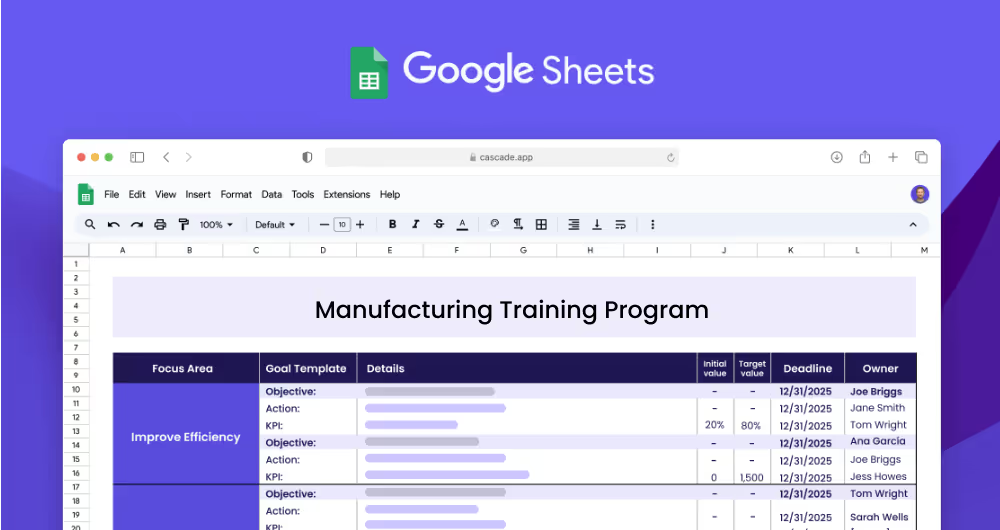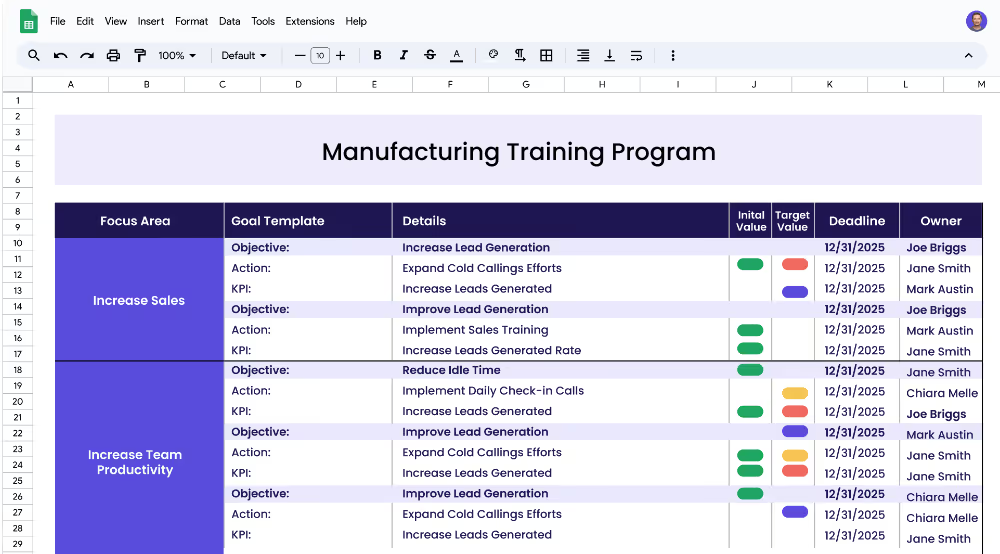A manufacturing training program is a set of activities that help to develop the knowledge and skills of employees within a manufacturing organization. The program typically involves training employees in specific skill sets, such as safety procedures, production processes, and quality control. The goal of a manufacturing training program is to increase employee productivity, improve knowledge and skills, and increase quality and customer satisfaction.
Each focus area has its own objectives, projects, and KPIs to ensure that the strategy is comprehensive and effective.
This manufacturing training program template is designed for manufacturing organizations and teams who want to create a comprehensive training program to develop the knowledge and skills of their employees. The template provides a comprehensive framework that guides you through the process of setting measurable targets, implementing projects, and tracking progress.
The first step in creating a manufacturing training program is to define the focus areas. Focus areas are broad topics that you want to focus on. Examples of focus areas for a manufacturing training program could include 'Developing Knowledge and Skills', 'Cross-Functional Collaboration', and 'Quality Control'. Defining focus areas helps to ensure that all areas of the program are addressed.
Once the focus areas have been identified, the next step is to develop objectives that fall under each focus area. Objectives are specific, measurable goals that you want to achieve in each focus area. For example, under the focus area 'Developing Knowledge and Skills', an objective could be to 'Improve employee productivity'. Objectives help to ensure that the manufacturing training program is focused and effective.
The next step is to set measurable targets, also known as key performance indicators (KPIs), to tackle each objective. KPIs are measurable targets that are used to track progress in achieving an objective. For example, under the objective 'Improve employee productivity', a KPI could be to 'Increase productivity by 10%'. Setting KPIs helps to ensure that the training program is effective in achieving its objectives.
Once the KPIs have been set, the next step is to implement related projects to achieve the KPIs. Projects are specific activities that need to be completed in order to achieve the KPIs. For example, under the KPI 'Increase productivity by 10%', a project could be to 'Provide employees with training programs'. Projects help to ensure that the training program is able to effectively achieve its KPIs.
If you’re ready to accelerate your strategy and see faster results, consider using Cascade Strategy Execution Software. Unlike spreadsheets, Cascade provides a streamlined platform designed to help you create, track, and execute your strategy with ease. Sign-up for free or book a demo with one of our strategy experts to get started today!


